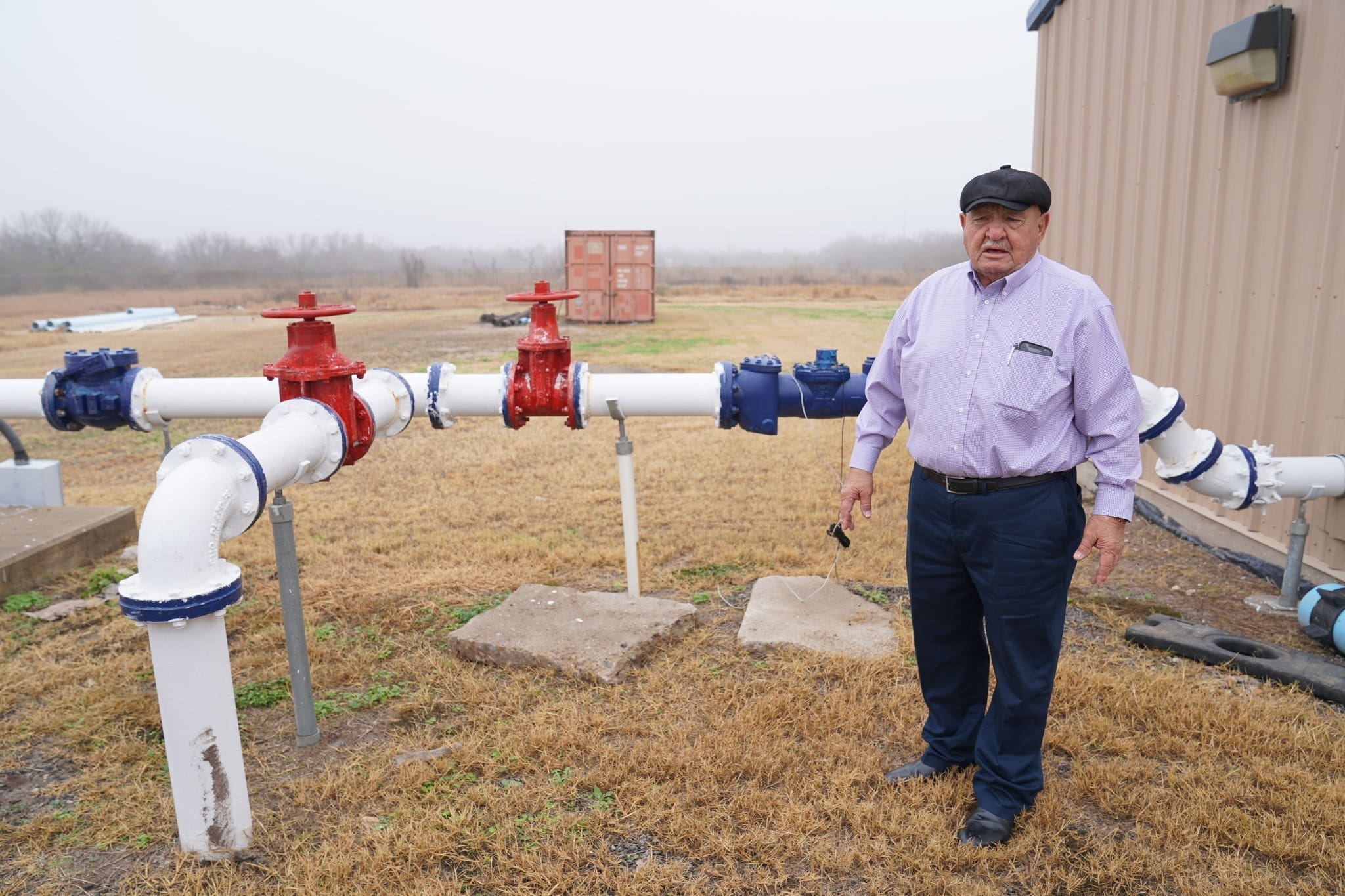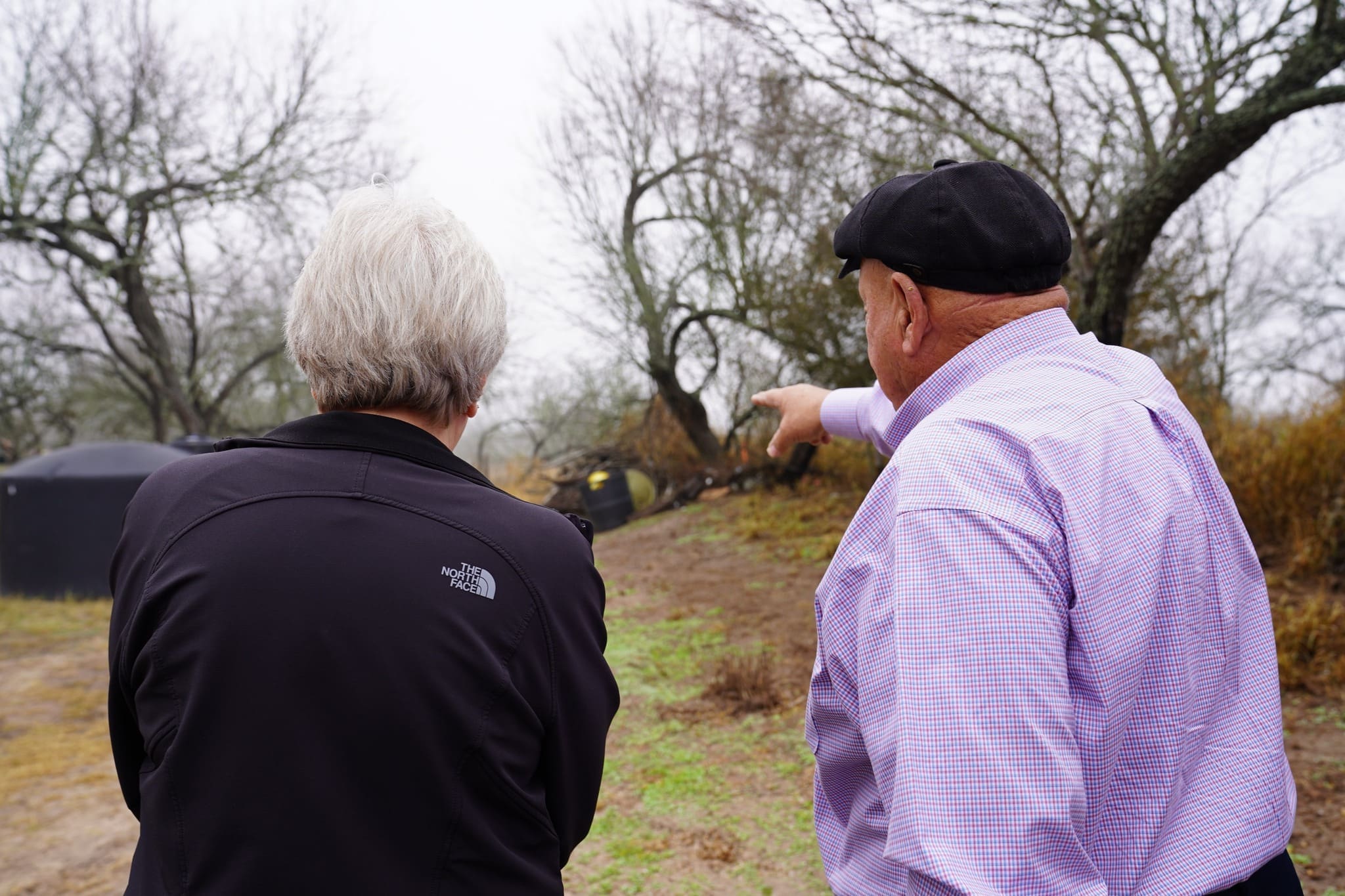For decades, Jim Wells County Fresh Water Supply District No. 1 (FWSD #1) faced overwhelming challenges: deteriorating infrastructure, failing septic systems, and a long-standing absence of wastewater services. Located in the rural South Texas communities of Ben Bolt and Green Acres, the district served hundreds of households — many relying on unapproved and aging septic tanks that contaminated groundwater and endangered public health.
“We’re 50 years behind. That’s the reality out here.”
— Octavio Flores, General Manager of FWSD #1
When Flores and a new board took over roughly seven years ago, they inherited more than crumbling infrastructure. They stepped into a district mired in financial dysfunction and corruption.
“People were stealing everything,” Flores said. “We had to bring in the Texas Rangers. If there was something to steal, they took it — even equipment.”
The system’s reputation was so damaged that traditional lenders wouldn’t even consider working with them.
“No bank wanted to deal with us,” he recalled. “That’s how bad it was.”
The turnaround began when recently retired Raul Gonzalez of Communities Unlimited (CU), then South Texas Coordinator of Community Infrastructure, walked through Flores’ door. The two connected around the time Flores took over the district.
“Raul introduced himself and offered help through CU,” Flores said. “From that point on, we built a great friendship — and a strong business relationship. Honestly, I don’t do anything without Communities Unlimited. They’re good — great, actually.”

At the time, the district was teetering on the edge of receivership. But with support from CU and other partners — including Flores’ close friend and trusted advisor Jake Sheeran, a former USDA Area Director — the board began rebuilding from the ground up: establishing oversight, cleaning up operations, and restoring community trust. Today, FWSD #1 is financially independent and poised for transformation.
That transformation hinges on a proposed $61 million USDA Colonia grant — an enormous investment that would bring first-time wastewater service to more than 650 homes. The project includes a complete collection system, six lift stations, and the decommissioning of all septic tanks. Wastewater will be treated by the nearby City of Alice through a long-standing partnership.
“This actually started about 12 years ago,” Flores said. “Back then it was going to cost $13 million and be done in phases. Now it’s $61 million — but that’s what it takes to do it right.”

While the USDA application remains under legal review — and the district has not yet received a Letter of Conditions — CU’s Lending Team stepped in with a $300,000 loan from its Community Development Financial Institution (CDFI) fund to help keep the momentum going. The project initially began with processing support, and CU staff — led by Community Environmental Management Specialist Jorge Negrete and Senior Economic Development Loan Officer Chris Ranniger — helped finalize the loan, which covers key pre-construction costs like engineering, legal services, surveying, and land acquisition.
CU’s loan stood out for one major reason: speed and flexibility. Originally pitched as an interest-only loan, CU’s final offer was even more attractive — it didn’t require property as collateral and allowed the district to move quickly.
“Even though we have the reserves, CU was faster and more flexible than any bank,” Flores said. “It’s always better to borrow and keep your reserves intact.”
CU’s support didn’t stop with funding. Because the district had not raised water rates since 2015, Ranniger recommended a new rate study to ensure long-term sustainability. Negrete, in coordination with Gonzalez, initiated the process and confirmed that CU would complete the study as part of its technical assistance. The study will help the district assess current financials, evaluate rate structures, and ensure they can meet all loan obligations. Once the study is complete and implemented, it is expected to significantly improve the district’s operating ratio.

If the USDA project is approved and funded, the district will begin receiving wastewater revenues for all 650 of its water connections — an essential next step in their transformation.
With a $1 million grant from the Texas Water Development Board (TWDB), the district is also preparing to take over the struggling English Acres system and expand service across rural Jim Wells County. Flores said TWDB gave verbal approval for the water interconnection project in March 2025.
“We’re the only water district in Jim Wells County — and we’re preparing to take over the rest,” Flores said.
It’s a dramatic shift from the district’s troubled past — one that Flores acknowledges openly.
“I’m vocal about what happened before. It’s the truth,” he said. “But now, we’re in a strong position. And we got here because CU believed in us when no one else would.”
And to think — it all began as a district in crisis. Today, it stands as a model for other rural utility systems to aspire to — shaped by strong leadership, forged through adversity, and supported by a partner like CU who never walked away.
“CU knows where we started and where we are now. They know more than I do — and that’s exactly who I want on my side.”
— Octavio Flores

